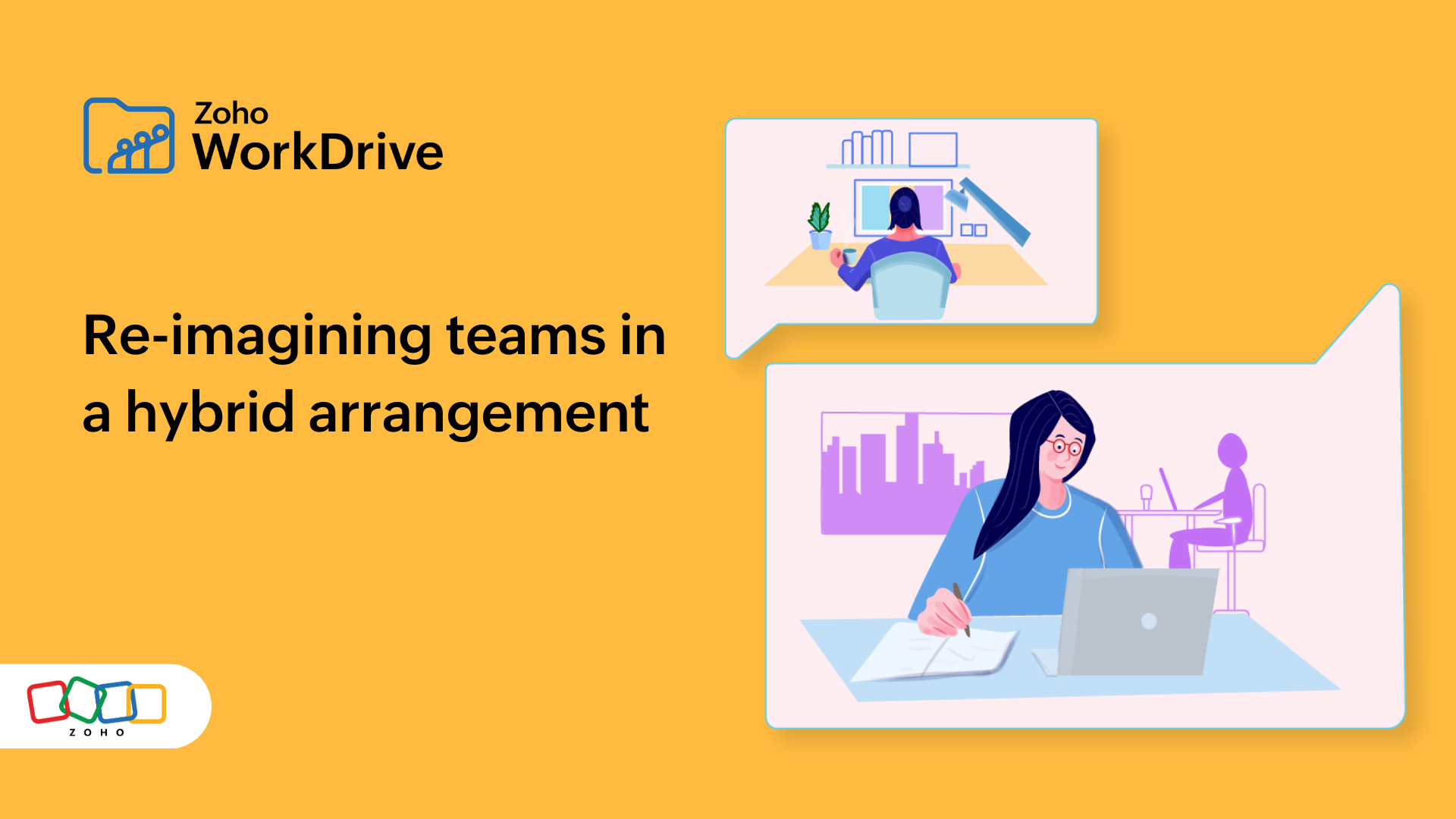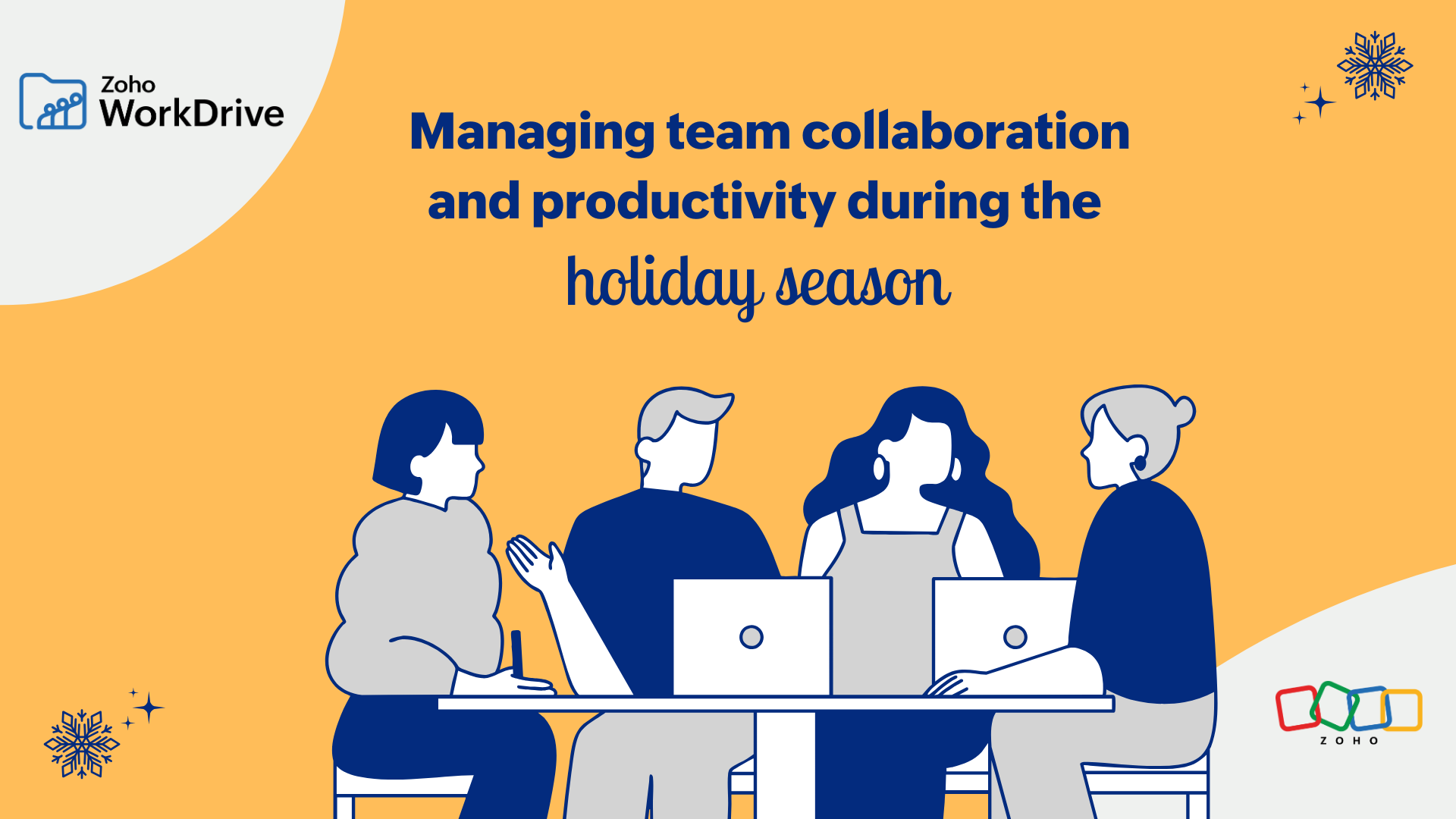- HOME
- Work Culture
- The hybrid work model: Redefined
The hybrid work model: Redefined
- Last Updated : December 15, 2023
- 1.1K Views
- 3 Min Read

Although hybrid work seems like a straightforward work model, it presents several key challenges. A recent article by CNBC says workers are drawn to hybrid work, but also find it exhausting. This claim necessitates a deeper understanding of hybrid work culture.
Welcome to the second blog of our series on hybrid work! In our previous post, we debunked four common myths about hybrid work. This post will give you a brief overview of the aspects that make up every work model, and how a team is impacted when members participate in one or more of these arrangements.
Before getting into the topic, let's discuss the major aspects of a work arrangement. These include:
Work site: This is the place where an employee works. This could be the office, their home, or sometimes, any location they choose.
Work location: This is the place where a business establishes an office. Modern businesses focus on expanding their global reach. This leads to setting up offices in various locations. This can impact reply time to questions and feedback, since different locations come with varying time zones.
Work hours: Even when employees work from the same place, they may have varied work hours, necessitating an effective work schedule. For example, employees working in the same office location may be assigned different shifts.
All the work models designed so far have taken these aspects into account. Now, we'll cover the three main work models used globally.
Working from the office: This work model was the norm for most organizations before the pandemic. Nearly all employees practiced co-located working, which emphasized physical presence and collaboration.
Working from home: This work model gained popularity after the onset of the pandemic and ensuing lockdowns. This is where all employees work remotely, with an emphasis on focus, freedom, and flexibility.
Working remotely, but together: This model involves virtual collaboration among geographically dispersed teams. It is an example of a satellite work environment, where the majority of the team is co-located, and a small number of teammates work from home.
Each of these models helps a team to develop a different focus. This may be a company's purpose, or an employees' individual talents and professional goals. To understand the attributes of these models better, let's use an image representing the characteristics of each work culture. The parts where two or more sets intersect, represent the results often seen when team members participate in more than one of the work models.

Working from office + Working remote, together:
A team that supports both the satellite and co-located work modes will better nurture interpersonal relationships inside the professional workspace since teammates frequently meet within these two work arrangements.

Working remote, together + Working from home:
Both of these models give team members the freedom of working from any place they choose. Teams that work within such arrangements have the freedom to work in their preferred location, so an effective work-life balance may be achieved.
Working from home + Working from office:
Today, many employees make their mental health a priority—even over financial incentives. Focus has shifted from the organization's collective goal to an individual's purpose and how it aligns with the goals of the company. This is best experienced by teams that have members working from home as well as working from the office.

The hybrid conglomerate:
Employees working for a business focus more on finding their purpose in the role they perform. According to Maslow's hierarchy of needs, esteem and self-actualization (pursuing a purpose) come right after safety needs (employment).

After the pandemic and lockdowns, the world experienced a transition in work culture. Since the safety needs (employment) have been taken care of, the next in line is esteem and self-actualization (a purpose). This is where a team looks to have a mix of the benefits all the other three work arrangements have to offer, and experience the best of all models. In other words, you can work the way you like, while still working together. That's what true purpose is all about—feeling connected, creating meaning, and doing what matters to you the most.
Zoho WorkDrive helps you seamlessly collaborate, brainstorm, ideate, and create within any work arrangement, whether it's hybrid, remote, or co-located.
Empower your hybrid teams with the right technology.
Work the way you like—together.


